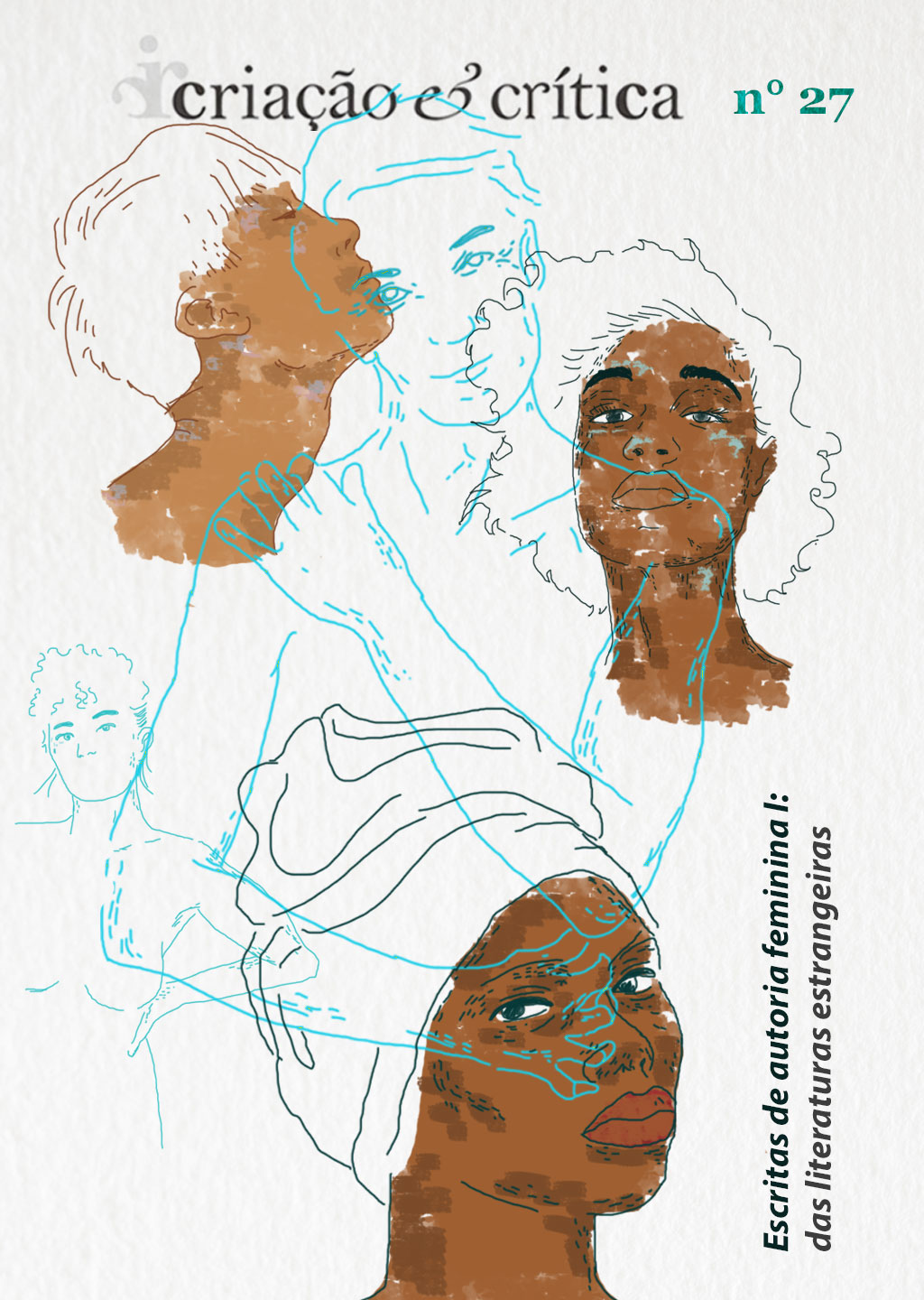Trauma and possibles pathways to healing in The bluest eye: Pecola's story and Claudia's narration
DOI:
https://doi.org/10.11606/issn.1984-1124.i27p139-162Keywords:
American Literature, African American Literature, Trauma, Toni Morrison, The Bluest EyeAbstract
The Bluest Eye tells the story of Pecola, a black little girl who undergoes different forms of discrimination and abuse because of the color of her skin. As result of all the pain and suffering—including an incestuous rape—which she is subjected to, the girl loses her sanity. Therefore, one of the objectives of this article is to analyze how trauma is portrayed in the novel, considering the many micro-aggressions which Pecola is exposed to and which result in insidious
Downloads
References
BRISON, S. “Trauma Narratives and the Remaking of the Self.” In: BAL, M.; CREWE, J.; SPITZER, L. Acts of Memory: Cultural Recall in the Present. Lebanon: University Press of New England, 1999, p. 39-54.
BROWN, L. “Not Outside the Range: One Feminist Perspective on Psychic Trauma”. In: CARUTH, C. Trauma: Explorations in Memory. Baltimore: The Johns Hopkins University Press, 1995, p. 100-112.
CARUTH, C. Trauma: Explorations in Memory. Baltimore: The Johns Hopkins University Press, 1995.
CARUTH, C. Unclaimed Experience: Trauma, Narrative, and History. Baltimore: The Johns Hopkins University Press, 1996.
CRAPS, S. Postcolonial Witnessing: Trauma Out of Bounds. London: Palgrave Macmillan, 2013.
DEGRUY, J. Post Traumatic Slave Syndrome: America’s Legacy of Enduring Injury and Healing. Milwaukie: Uptone Press, 2005.
FREUD, S. The Complete Writings (Arthur Wallens Classics). A.W. Books, 2006, Kindle Edition.
HOOKS, b. Ain’t I a Woman: Black Women and Feminism. Abingdon: Routledge, 2015.
Imitation of Life. Dir. John M. Stahl. Screenplay by William Hurlbut. Universal Studios, 1934. Film.
MALMGREN, C. “Texts, Primers, and Voices in Toni Morrison’s The Bluest Eye”. In: BLOOM, H. Bloom’s Modern Critical Interpretations – Toni Morrison’s The Bluest Eye – Updated Edition. New York: Infobase Publishing, 2007, p. 145-158.
MORRISON, T. The Bluest Eye. New York: Vintage Books, 1999.
MORRISON, T. Playing in the Dark. New York: Vintage Books, 1993.
MORRISON, T. “Toni Morrison Talks About Her Motivation For Writing”. Online video clip. Youtube. Youtube, 2008. Available at <https://www.youtube.com/watch?v=_8Zgu2hrs2k>. Accessed on June 24th, 2020.
MOSES, C. “The Blues Aesthetic in Toni Morrison’s The Bluest Eye”. In: BLOOM, H. Bloom’s Modern Critical Interpretations – Toni Morrison’s The Bluest Eye – Updated Edition. New York: Infobase Publishing, 2007, p. 125-144.
NEAL, L. “The Black Arts Movement”. The Drama Review: TDR, Cambridge, Vol. 12, No. 4, p. 28-39, 1968.
PALMER, C. “Civil Rights Movement, U.S.”. In: PALMER, C. Encyclopedia of African-American Culture and History. Farmington Hills: Thomson Gale, 2006, p. 417-478.
RAMBSY II, H.; SMETHURST, J. “Reform and Revolution, 1965-1976: the Black Aesthetic at Work”. In: GRAHAM, M.; WARD, J. The Cambridge History of African American Literature. Cambridge: Cambridge University Press, 2011, p. 268-287.
RUCKER, W. “Black Power”. In: ALEXANDER, L.; RUCKER, W. Encyclopedia of African American History. Santa Barbara: ABC-CLIO, 2010, p. 662-664.
TASSO, T. Gerusalemme Liberata. Scotts Valey: CreateSpace, 2015.
VISSER, I. “Decolonizing Trauma Theory: Retrospect and Prospects”. In: ANDERMAHR, S. Decolonizing Trauma Studies: Trauma and Postcolonialism. Basel: MDPI, 2016, p. 7-23.
VISSER, I. “Trauma theory and postcolonial literary studies”. Journal of Postcolonial Writing, Abingdon, v. 47, n. 3, p. 270-282, 2011.
WERRLEIN, D. “Not so Fast, Dick and Jane: Reimagining Childhood and Nation in The Bluest Eye”. In: BLOOM, H. Bloom’s Modern Critical Interpretations – Toni Morrison’s The Bluest Eye – Updated Edition. New York: Infobase Publishing, 2007, p. 193-208.
WHITEHEAD, A. Trauma Fiction. Edinburgh: Edinburgh University Press, 2004.
Downloads
Published
Issue
Section
License
Copyright (c) 2020 Rosana Ruas Machado Gomes

This work is licensed under a Creative Commons Attribution-NonCommercial-ShareAlike 4.0 International License.
Authors who publish with this journal agree to the following terms:
- Authors retain copyright and grant the journal right of first publication with the work simultaneously licensed under a Creative Commons Attribution License that allows others to share the work with an acknowledgment of the work's authorship and initial publication in this journal.
- Authors can enter into separate, additional contractual arrangements for the non-exclusive distribution of the journal's published version of the work (e.g., post it to an institutional repository or publish it in a book), with an acknowledgment of its initial publication in this journal.
- Authors are permitted and encouraged to post their work online (e.g., in institutional repositories or on their website) before and during the submission process, as it can lead to productive exchanges, as well as earlier and greater citation of published work (See The Effect of Open Access).



